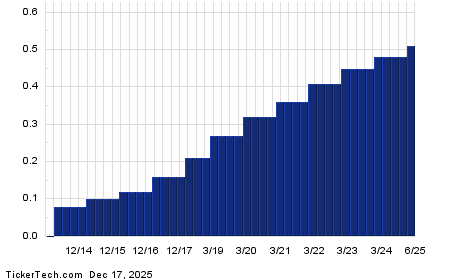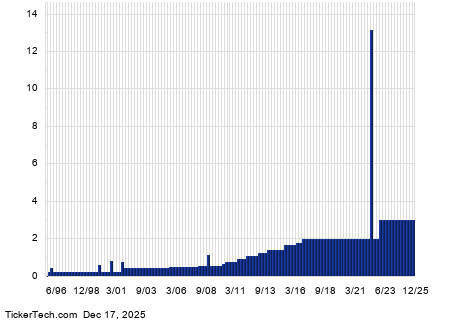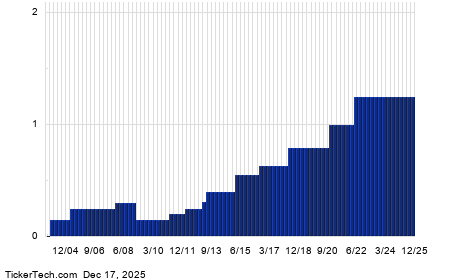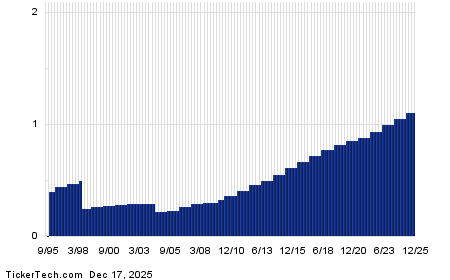Coffee Prices Decline Amid Record Exports from Brazil
High Exports from Brazil Weigh on Coffee Markets
March arabica coffee (KCH25) closed down -3.30 (-1.00%) on Thursday, while March ICE robusta coffee (RMH25) fell -23 (-0.47%).
On Thursday, coffee prices fell after initially rising due to record exports from Brazil. Cecafe reported that Brazil’s arabica coffee exports for 2024 increased by +20% year-on-year, reaching a record 37 million bags. At the same time, robusta coffee exports surged by +98% year-on-year to a record 9.4 million bags.
Weather and Supply Impacting Prices
Earlier in the week, arabica coffee had surged to a three-week high partly due to dry conditions in Brazil. Somar Meteorologia noted that the key arabica-growing region of Minas Gerais received only 29.6 mm of rain last week, which is just 31% of the historical average.
Conversely, on Wednesday, robusta prices hit a two-week low amidst signs of increased supplies from Vietnam. The General Department of Vietnam Customs reported a +102.6% year-on-year surge in December coffee exports, totaling 127,655 metric tons.
Increasing inventories added downward pressure on coffee prices. The Arabica inventory monitored by ICE reached a two-and-a-half-year high of 993,562 bags last Monday. Similarly, robusta inventories hit a three-month high of 4,415 lots the following Wednesday.
Outlook for Brazilian Coffee Crop
Last month, coffee prices had risen dramatically due to expectations for a smaller Brazilian coffee crop. In December, Volcafe predicted that Brazil’s arabica coffee production for 2025/26 would drop to 34.4 million bags, about 11 million bags lower than a previous estimate due to prolonged drought conditions in Brazil. This year marks the fifth consecutive year of a global arabica coffee deficit, projected at 8.5 million bags.
On December 20, Safras & Mercado estimated the 2025/26 Brazilian coffee crop would reach 62.45 million bags, a decrease of -5% from the previous year. The group stated that arabica output might decline by -15% year-on-year to 38.35 million bags, while robusta production is expected to be 24.1 million bags.
Long-Term Effects of El Niño
The impacts of last year’s dry El Niño weather could lead to long-term damage for coffee crops in South and Central America. Rainfall in Brazil has continued to fall below average since April, which affects coffee trees during their critical flowering stage, jeopardizing the 2025/26 arabica coffee crop. According to Cemaden, Brazil is experiencing its driest weather since 1981. Likewise, Colombia is gradually recovering from the El Niño-driven drought of last year.
Robusta Production Declines
Robusta prices are supported by reduced production levels. Vietnam’s coffee output for the 2023/24 crop year fell by -20% to 1.472 million metric tons, marking the smallest crop in four years. The USDA Foreign Agriculture Service (FAS) projected a slight drop for Vietnam’s robusta coffee production, estimating it at 27.9 million bags for the upcoming marketing year. Additionally, Vietnam’s General Statistics Office reported a -17.1% year-on-year drop in 2024 coffee exports to 1.35 million metric tons.
In contrast, the Vietnam Coffee and Cocoa Association raised its forecast for 2024/25 production to 28 million bags, up from 27 million bags previously estimated. As the largest robusta producer globally, Vietnam’s numbers significantly impact coffee markets.
Global Export Trends and Production Estimates
Large global coffee exports are contributing to bearish trends in prices. The International Coffee Organization (ICO) noted that global coffee exports increased +15.1% year-on-year to 11.13 million bags for October, marking the start of the 2024/25 season. For the full 2023/24 cycle (October to September), global exports rose by +11.7% year-on-year to 137.27 million bags. Additionally, Cecafe indicated that Brazil’s coffee exports for 2024 rose by +30.2% year-on-year to an all-time high of 46.3 million bags.
The ICO also announced a remarkable +5.8% year-on-year rise in global coffee production for the 2023/24 season, reaching a record 178 million bags due to an exceptional off-biennial crop year. While coffee consumption grew by +2.2% year-on-year to a record 177 million bags, this resulted in a slight surplus of 1 million bags.
The USDA’s biannual report issued on December 18 presented a mixed outlook for coffee prices. They projected a world coffee production increase of +4.0% year-on-year to 174.855 million bags for 2024/25, with arabica production rising by +1.5% to 97.845 million bags, and robusta production jumping by +7.5% to 77.01 million bags. However, they also forecast a -6.6% decline in ending stocks, dropping to a 24-year low of 20.867 million bags, down from 22.347 million bags in 2023/24. Furthermore, the USDA predicted Brazil’s coffee production at 66.4 million metric tons for the 2024/25 season, lower than the previous estimate of 69.9 million metric tons, with expected inventories decreasing to 1.2 million bags by the end of the season in June, marking a -26% year-on-year decline.
On the date of publication, Rich Asplund did not have any positions in any of the securities mentioned in this article. All information and data in this article is solely for informational purposes. For more information, please view the Barchart Disclosure Policy here.
The views and opinions expressed herein are the views and opinions of the author and do not necessarily reflect those of Nasdaq, Inc.







